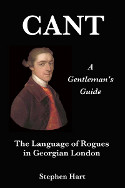BRIAN SEYMOUR
Executed for murder, 2nd March, 1749
BRIAN SEYMOUR was born at Waterford, in Ireland; and his father having served in the army many years, and been at length promoted to the post of a right-hand man, or, in a more military phrase, made a corporal, the son must also
'Seek for honour even in the cannon's mouth.'
He enlisted in the sixth regiment of foot, and, soon afterwards embarking for Flanders, had a share in the memorable battle of Fontenoy.
The rebellion in 1745 occasioned his being sent to England, when he served under General Wade, who then commanded in Yorkshire; but, marching thence to Newcastle, Seymour had there a quarrel with a soldier respecting a woman of ill fame; and, a duel ensuing, his antagonist was killed: but the troublesome situation of affairs induced the general to grant Seymour a free pardon, without a minute scrutiny into his conduct.
Proceeding to Scotland, this man was present at the battle of Culloden, where he behaved with singular courage; but the regiment in which he served, having been greatly injured, was ordered into winter quarters at Edinburgh, where the indulgence of his irregular passions gave rise to the crime which cost him his life.
At this time it was customary for some of the ministers of the church of Scotland, who were out of employment, to marry people at alehouses, in the same manner that the Fleet marriages were conducted in London. Sometimes people of fortune thought it prudent to apply to these marriage-brokers; but, as their chief business lay among the lower ranks of people, they were deridingly called by the name of 'Buckle the Beggars.'
Most of these marriages were solemnized at public houses in the Cannongate; and Seymour happening to be present there when a couple came to be married, and no priest present, be whispered the landlady, that if she would procure him a suit of black he would officiate as the parson. The woman, unwilling to lose a customer, procured the clothes, and Seymour, being dressed in them, went into the room where the young couple waited, assuming the grave deportment of a real clergyman.
The lady who was to be married hinting that she did not think he was a minister, he solemnly averred that he was, and the marriage took place accordingly.
Before ten o'clock at night Seymour was obliged to return to the barracks in the Castle; but by this time he was so much intoxicated, that he was prepared to affront every one he met. When he came to the Lawnmarket, he ran against a gentleman's servant named Johnson, who, being irritated, struck Seymour a blow on the face; on which the latter drew his sword, and stabbed Johnson, so that he instantly died; when the murderer put up his sword, and proceeded towards the Castle. A shoemaker, named Young, having observed what had passed, followed Seymour to the gate of the Castle; but the clock striking ten at that instant, the drawbridge was pulled up, so that Young could not be admitted for that night.
On the following morning Young went to the Lord Justice Clerk, and, informing him of what he knew of the transaction, offered his assistance in discovering the murderer: on which his lordship ordered an officer to attend him, and directed the governor to let him have a sight of all the soldiers.
At ten o'clock the men were drawn up on the parade, and Young, walking round the lines, fixed on Seymour as the man who had committed the murder; whereupon he was delivered up, to abide the determination of the laws.
On the trial Young positively swore to the identity of the offender; and other evidence arising to prove that he was the party, he was capitally convicted, and sentence of death was pronounced against him.
This offender denied his guilt for some time, and hinted that Young was perjured; but he afterwards became truly sensible of the enormity of his crime, and confessed it, with all its aggravating circumstances. Two clergymen attended him to the place of execution, to which he walked, dressed in a shroud, and reading a religious book.
He was executed at Edinburgh on the 2nd of March, 1749.

